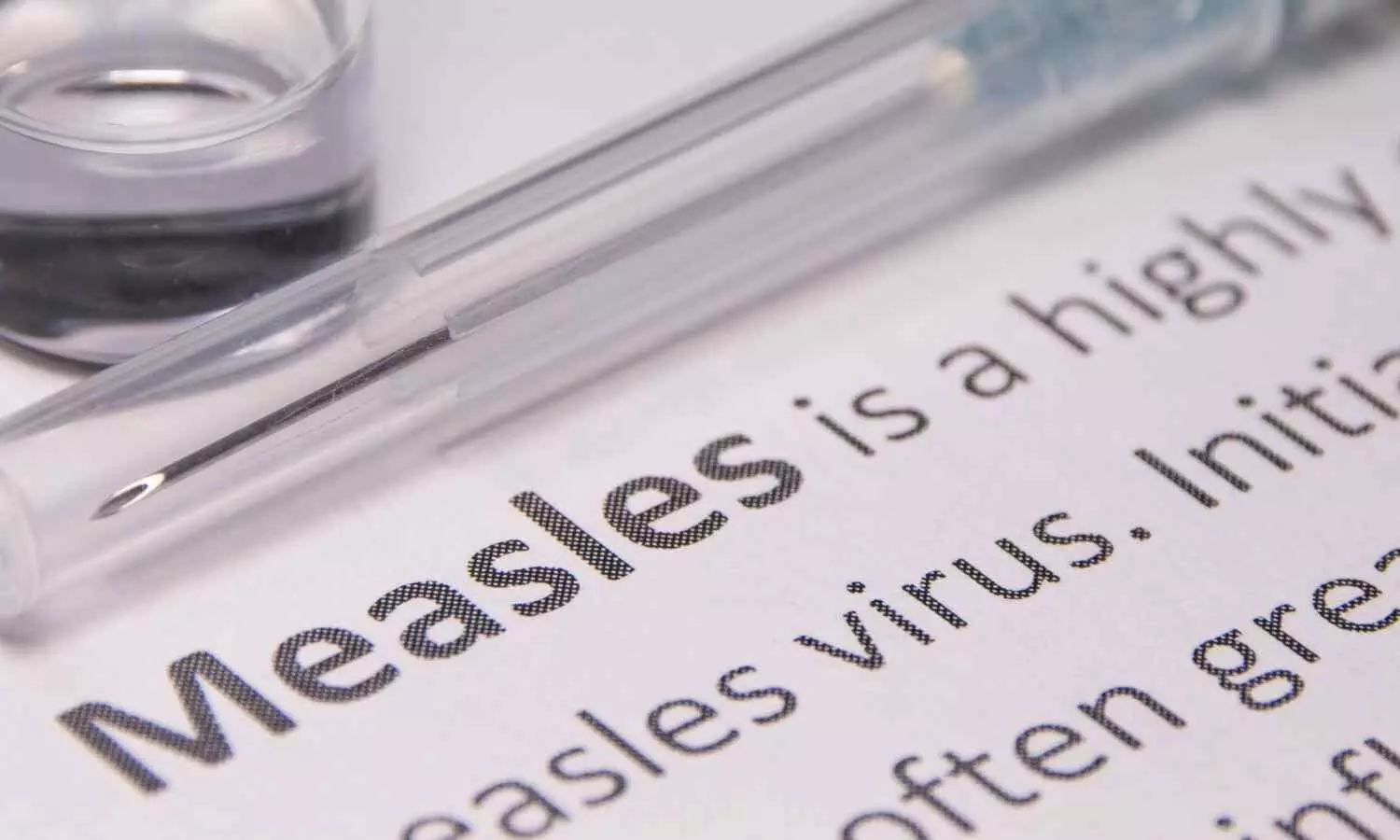Birth by C-section more than doubles odds of measles vaccine failure, claims study

A study by the University of Cambridge, UK, and Fudan University, China, has found that a single dose of the measles jab is up to 2.6 times more likely to be completely ineffective in children born by C-section, compared to those born naturally.
Failure of the vaccine means that the child’s immune system does not produce antibodies to fight against measles infection, so they remain susceptible to the disease.
A second measles jab was found to induce a robust immunity against measles in C-section children.
Measles is a highly infectious disease, and even low vaccine failure rates can significantly increase the risk of an outbreak.
A potential reason for this effect is linked to the development of the infant’s gut microbiome-the vast collection of microbes that naturally live inside the gut. Other studies have shown that vaginal birth transfers a greater variety of microbes from mother to baby, which can boost the immune system.
“We’ve discovered that the way we’re born — either by C-section or natural birth — has long-term consequences on our immunity to diseases as we grow up,” said Professor Henrik Salje in the University of Cambridge?’s Department of Genetics, joint senior author of the report.
He added: “We know that a lot of children don’t end up having their second measles jab, which is dangerous for them as individuals and for the wider population.
“Infants born by C-section are the ones we really want to be following up to make sure they get their second measles jab, because their first jab is much more likely to fail.”
The results are published today in the journal Nature Microbiology.
At least 95% of the population needs to be fully vaccinated to keep measles under control but the UK is well below this, despite the Measles, Mumps and Rubella (MMR) vaccine being available through the NHS Routine Childhood Immunisation Programme.
An increasing number of women around the world are choosing to give birth by caesarean section: in the UK a third of all births are by C-section, in Brazil and Turkey over half of all children are born this way.
“With a C-section birth, children aren’t exposed to the mother’s microbiome in the same way as with a vaginal birth. We think this means they take longer to catch up in developing their gut microbiome, and with it, the ability of the immune system to be primed by vaccines against diseases including measles,” said Salje.
To get their results, the researchers used data from previous studies of over 1,500 children in Hunan, China, which included blood samples taken every few weeks from birth to the age of 12. This allowed them to see how levels of measles antibodies in the blood change over the first few years of life, including following vaccination.
They found that 12% of children born via caesarean section had no immune response to their first measles vaccination, as compared to 5% of children born by vaginal delivery. This means that many of the children born by C-section did still mount an immune response following their first vaccination.
Two doses of the measles jab are needed for the body to mount a long-lasting immune response and protect against measles. According to the World Health Organisation,in 2022 only 83% of the world’s children had received one dose of measles vaccine by their first birthday-the lowest since 2008.
Salje said: “Vaccine hesitancy is really problematic, and measles is top of the list of diseases we’re worried about because it’s so infectious.”
Measles is one of the world’s most contagious diseases, spread by coughs and sneezes. It starts with cold-like symptoms and a rash, and can lead to serious complications including blindness, seizures, and death.
Before the measles vaccine was introduced in 1963, there were major measles epidemics every few years causing an estimated 2.6 million deaths each year.
Reference:
Wei Wang, Megan O’Driscoll, Qianli Wang, Sihong Zhao, Henrik Salje, Hongjie Yu. Dynamics of measles immunity from birth and following vaccination. Nature Microbiology, 2024; DOI: 10.1038/s41564-024-01694-x.



